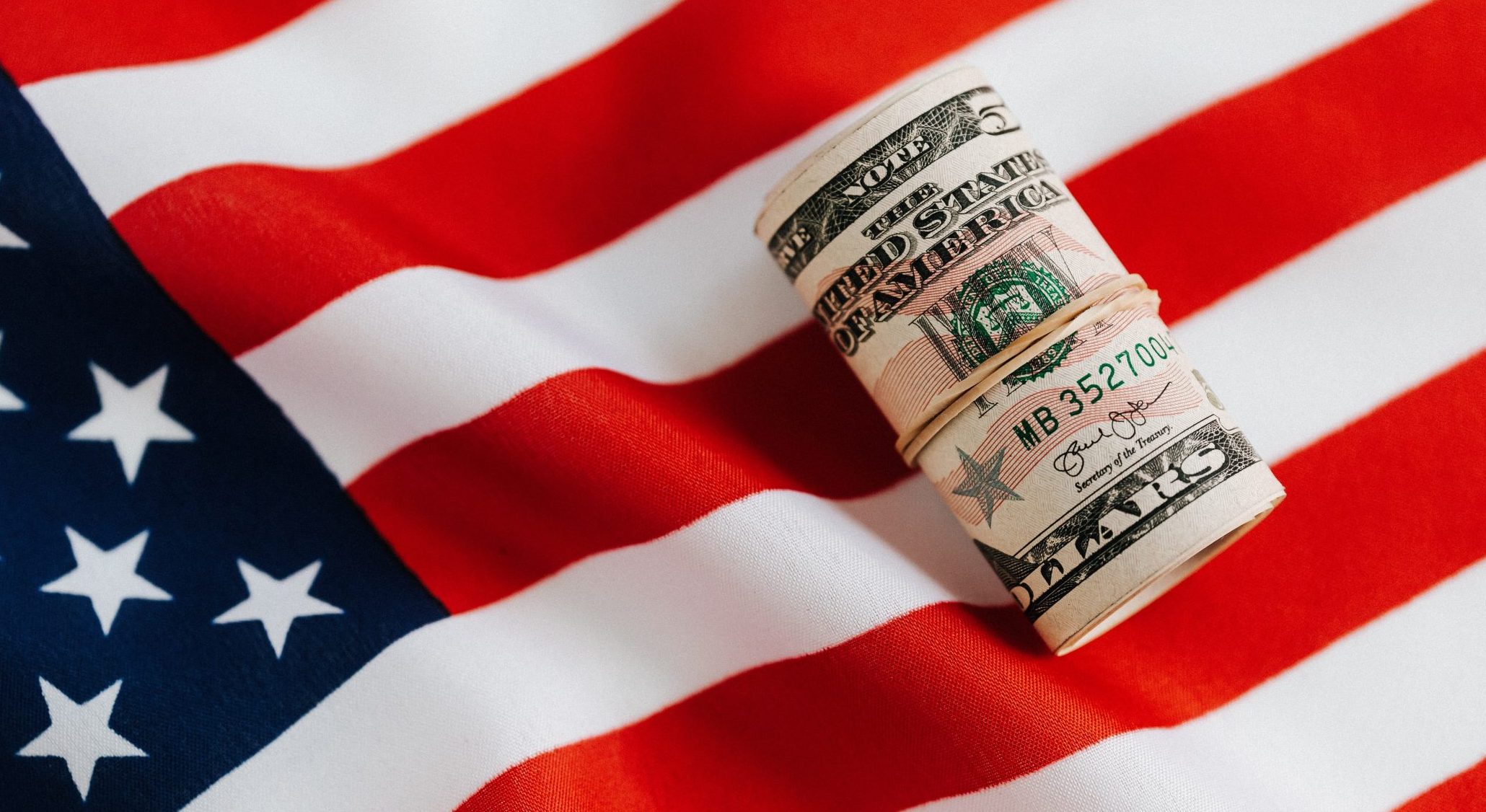Unprecedented interconnections due to the explosion of media technologies in the 1960s led Canadian philosopher Marshall McLuhan to coin the term “global village.” In the 1990s, worldwide access to the internet added another layer of communication. Microsoft co-founder Bill Gates in 2013 said: “The internet is becoming the town square for the global village of tomorrow.”
As the world prepares for the third decade of the 21st century, that proverbial village is breaking up into hamlets with each seeking to reduce imports from one or more trade partners to balance its trade deficit. Accelerating this trend is the COVID-19 outbreak, which gave world leaders and citizens a glimpse of a less connected world.
However, untangling decades’ worth of business relations won’t be easy and will require more than just a strong political will as it will likely hurt economies and job creation. “Increasing tariffs is not good for anyone,” EU Commissioner of Trade Phil Hogan told The Carnegie Endowment in July. “It adds costs to business and therefore consumers. Then there is the question of intermediate goods, which help create jobs in the country that imports them.”
For emerging countries, international trade is necessary for their economies to recover after the COVID-19 pandemic. According to the U.N. Food and Agriculture Organization, Egypt imports 40 percent of its food, while factories import 70 percent of their needs from intermediary goods, according to Mahmoud Mohieldin, a former investment minister, at a press event in April.
One repercussion of trade wars is that businesses will likely have to alter their overseas suppliers. That could either be an opportunity or a risk for emerging markets, including Egypt.
Accordingly, to avoid entering a trade war, governments must carefully decide where to go next and anticipate how trade relations might change in the years ahead. “As it destabilizes economies, intensifies geopolitical frictions and exposes the risks of current global manufacturing and supply networks, the pandemic is also likely to redraw the map of world trade,” wrote Ben Aylor, managing director and senior partner at Boston Consulting Group (BCG), in July.

Fend for thyself
The creation of the World Bank (1944), IMF (1945), World Trade Organization (1995) and G20 (1999), aimed to “establish rules, norms, and means of communicating and coordinating national policy decisions, especially during times of crisis, to help prevent calamity,” wrote Chad Brown, a senior researcher at the Centre for Economic Policy Research, in a World Bank blog. Those bodies preached trade without barriers. “First, there’s no limit to prosperity. Second, broadly shared prosperity benefits everyone,” said World Bank President David Malpass, as reported by Reuters.
Over the decades, manufacturing hubs in the United States and Europe sold goods to the rest of the world. As they got richer, they became high-consumption markets. Meanwhile, emerging lower-income countries led by China offered cheaper labor and facilitations to attract those businesses. The result was many emerging manufacturing nations became net exporters to developed countries, which in turn became net importers. Some developed countries now want to lower their trade deficits by making imports more expensive.
The United States started its trade war with China in 2018 by imposing customs on a chunk of Chinese imports. It escalated by abusing the 1997 “Entity List,” adding nearly 300 companies with which U.S. firms were prohibited from doing business. The most notable are Chinese telecommunication equipment companies Huawei and ZTE. The Chinese responded by imposing custom charges on American produce. The latest development was the United States banning some Chinese lenders from dealing in dollars, as reported in the July 19 issue of The Economist.
The Trump administration also threatened retaliatory action against India, whose exports are exempt from customs as per the U.S. Generalized System of Prefrences framework, if it doesn’t import more American goods.
Meanwhile, the EU will ban palm oil imports under Renewable Energy Directive II as of 2021, which will hurt the world’s largest producer of the commodity, Indonesia. In June, the latter filed a formal complaint to the World Trade Organization (WTO) to reverse the decision.
Another form of EU protectionism is the “farm-to-fork” or “farm-to-table” movement, which came to the limelight in 2015. It promotes the use of local produce instead of imported commodities by giving incentives to growers and consumers. In the Policy Center Opinion section in June, Datu Yngson of the Caribbean ASEAN Council described those steps as “thinly veiled protectionist measures.”
The European Commission, meanwhile, proposes a carbon tax on imports as part of the European Green Deal signed in December to cut pollution by 50 percent in a decade. “The tax would reflect the amount of carbon emissions attributed to goods imported into the 27-nation region. Producers in countries with carbon-pricing mechanisms that the EU agrees are compatible with its own may be exempt,” Aylor wrote in a June blog. “It would create serious near-term challenges for companies with a large greenhouse gas footprint.”
That is something for Egyptian decision-makers and businesses to consider as the country ranked 53 on the list of most polluted countries in the world by the end of 2019, according to World Air Quality, a statistics portal. Cairo, where most of the nation’s manufacturers are located, ranks in the top five most polluted cities. Additionally, the EU is Egypt’s largest trading partner, accounting for 28.3 percent of trade value, according to the Central Bank of Egypt (CBE). “The requirement to measure, report and factor in the costs of a product’s carbon footprint is already in place in the EU,” wrote Aylor. “It could soon become a requisite for companies that export to Europe as well, contributing to the mounting global pressure to prepare strategies that reduce emissions.”
China also is protecting its economic prospects post-COVID-19 by developing and catering to the domestic market first, wrote Wang Xiangwei, former editor-in-chief of the South China Morning Post, in a June blog on the newspaper’s portal. The aim is to reduce China’s reliance on international trade to grow its GDP. “The inward shift does not necessarily mean China will retreat from global supply chains or into isolation. Still, China’s decisive turn to the domestic market and industries will have far-reaching implications not only on the Chinese economy but also on the world economy as a whole.”

Trade with Egypt
So far, Egypt’s decline in exports has been mainly due to declining demand during lockdowns across major markets, including the EU and the United States. In February, exports were nearly $2.7 billion compared with about $1.5 billion in May. However, export orders in July increased. Khaled Aboul Makarem, the head of Egypt’s Export Council for Chemicals, told Masrawy in August that as of mid-July, export orders were as much as 60 percent of their pre-pandemic volume. Heads of the food and agriculture, textile and garment, and furniture councils all report similar rebounds.
To further support that recovery, the Minister of International Cooperation Rania Al-Mashat agreed with the European Board for Reconstruction and Development (EBRD) in August on a $100 million low-interest loan to “facilitate trade.” ِAccording to Al Mashat, the money is part of a broader government strategy to promote exports, as reported by Akhbar Al Youm.
At the same time, the government imposed anti-dumping duties on machine-made Turkish rugs and floor coverings starting July 1 until further notice. They also apply to any carpets and textiles from other countries that pass through Turkey, which has had a free trade agreement with Egypt for 13 years.
Egypt has imposed anti-dumping duties on Chinese blankets since November. That protectionism may increase as China may further devalue its currency. “China will certainly further depreciate its currency to increase its competitiveness and offset the effects of higher tariffs,” wrote Mohamed Chemingui, a senior economist at the Egyptian Research Forum, in an April note. “This additional competitiveness of Chinese exports will boost exports to the rest of the world in general, including Arab countries.”
Lastly, the government extended blanket anti-dumping duties on iron billets and finished steel rebars that started last October.
On the flip side, Egyptian steel and aluminum exports may face hard times, according to Walid Gamal Eldin, chairman of the Export Council for Building Materials. The United States in March launched an investigation into steel imports from Egypt and 17 other countries. The International Trade Administration (ITD) noted Egypt’s profit margin from U.S.-bound steel (31.5 percent) was too high. “Foreign companies that price their products in the U.S. market below the cost of production or below prices in their home markets are subject to [anti-dumping] duties,” noted the ITD. “Foreign companies that receive financial assistance from foreign governments that benefits the production of goods from those companies and is limited to specific enterprises or industries or is contingent either upon export performance or upon the use of domestic goods over imported goods, are subject to countervailing duties.”
Meanwhile, the EU in June imposed anti-dumping fees on fiberglass fabrics coming from the China-Egypt Economic & Trade Zone (SETC-Zone). “The governments of Egypt and China have pooled their resources to provide the companies manufacturing in the SETC-Zone with favorable conditions that confer benefits to them,” the EU commission said in a statement reported by Belt & Road News, a Chinese news portal, in June. “This pooling of resources via such close cooperation serves a common purpose and benefits a common beneficiary (Jushi Egypt and Hengshi Egypt).” That decision comes despite Egypt signing the EU-Egypt Association Agreement, a free-trade deal in 2004, that guarantees customs-free access to the European market.
The EU dumping case was unexpected, but hardly shocking. “Implications of a full-blown U.S.-China or U.S.-EU trade war are not limited to the main parties involved,” wrote Chemingui. “They also affect other third-party countries through overlapping trade and financial networks, thus disrupting global supply chains.”
He explained that Egypt would benefit from the U.S.-China trade war, as it could become an industrial hub for America. However, it would lose out if the U.S. starts a trade war with the EU, as both are major trading partners with Egypt. According to the CBE, the EU accounts for 28.35 of Egypt’s trade, compared to 5.8 percent for the U.S.

Long-term change
The notion that free trade agreements make commerce easier may be coming to an end. “A trade agreement captured by an alternative set of special interests may make things worse just as easily as it makes them better,” wrote Dani Rodrik, a Harvard University economist, in a 2018 paper. “Such an agreement can move us away from the efficient outcome, even if it takes the guise of a free trade agreement and expands the volume of trade and investment.”
This sensitivity toward customs-exempt imports increases if the exporting government gives subsidies, export incentives or other facilitations to reduce production costs and ultimately prices, noted Rodrik.
Being the third party in a bilateral trade war also could reduce funding from developed nations to financial markets in emerging regions, such as Africa, noted Abdoulaye Diallo, Senegal’s finance minister, to Reuters in July. Ukraine, Peru and Bahrain exports are hurting because of rising steel prices and declining fuel prices caused by commerce wars elsewhere. “Trade tensions create uncertainty, and nobody is insulated from uncertainty,” Bahrain’s finance minister, Sheikh Salman bin Khalifa, told Reuters.
Aylor suggested that ongoing trade wars could redraw the global trade map as soon as 2023. In terms of value, international trade will not likely recover to 2019 levels before then.
By that time, trade traffic could look significantly different. BCG’s Trade Finance Model 2020 forecasts that two-way trade between China and the U.S. would be 15 percent ($128 billion) less than in 2019. Meanwhile, commerce between the U.S. and EU “will continue to grow, but at a sharply lower rate from the $135 billion surge between 2015 and 2019,” wrote Aylor.
He also forecasts Southeast Asia trade will grow by $22 billion with the EU, $26 billion with the United States and $41 billion with China by the end of 2023. Still, that would be a slower pace than during the preceding four years, noted Aylor.
The other factor shaping trade over the next three years will be how individual companies rebuild their supply chains to ensure continuity of operations in case of another pandemic or global crisis. “The supply chain is changing from labor arbitrage, which started in the 1990s, to greater reliance on digital platforms and knowledge workers,” said Bob Zaelick, a former World Bank president to the Carnegie Endowment in July.

The WTO
Experts agree a significant factor contributing to the increasing number of trade wars is the WTO’s failure to cope with recent developments in commerce. “If open societies [in the West] and authoritarian China are to keep their economic links and avoid a descent into anarchy, a new trade architecture is needed,” said The Economist in its July issue.
That structure must acknowledge that China has the second-largest GDP in the world, along with different political, cultural, and governance norms compared to the West.
To create more balanced trade relations, the WTO requires meaningful reforms. “The WTO is in crisis, even though it is perhaps one of the best organizations in the multilateral space to help us with some of the trade difficulties we are seeing,” said Hogan, of the EU Trade Commission, to Carnegie Endowment in July.
He noted the WTO’s regulations are nearly two decades old and need a significant update to address the need to work toward the U.N.’s Sustainable Development Goals, protect the climate and push for more institutional cooperation, among other issues.
Major reforms might include unifying e-commerce regulations as part of conventional free trade deals. Another is limiting state-sponsored facilitations, subsidies, and incentives that promote trade. In Egypt, for example, there is the revitalized Export Support Fund designed to reimburse some production costs of products sold abroad. If the WTO institutes such changes, the organization could scrutinize Egypt’s fund if a trade partner files a complaint citing unfair competition.
Reaching a consensus on a new global trade charter will prove difficult with 164 participating nations, noted Zaelick, the former World Bank official. The other problem is how to ensure that state-owned corporations do not get subsidies from the government to give them an unfair advantage in international markets. The third issue is the WTO’s special exemptions for emerging markets, which under the current system allows countries to choose if they want emerging market status, said Hogan.
However, without such reforms, trade wars among large and small nations would likely intensify as each government pursues its interests. That would only complicate existing problems. “Disillusioned with the WTO, the Trump administration’s negotiators unilaterally tried to wrestle China into liberalizing its economy and cutting subsidies, using the threat of tariffs and embargoes,” wrote The Economist in its July issue. “That has been a fiasco.”
Economies at stake
In June, the WTO published a press release stressing that while trade volume dropped 18.5 percent in the first quarter of 2020, that was not the worst-case scenario. “These declines are historically large, but could have been much worse,” the WTO said on its website. That scenario would have seen a 32 percent decline by year’s end, with the best-case forecast that trade would decline 13 percent.
However, ongoing unilateral decisions of nations waging trade wars have significant side effects. “This feeds a spiraling sense of lawlessness,” noted a July report by Rhodium, a research firm. As a result, direct investment from China to the EU dropped 69 percent since 2016, when trade tensions were rising but neither government took action or issued formal threats.
The other fallout is that tourism would likely decline for countries entering a trade war. “Foreign arrivals … have plummeted since the trade wars started and are down 15.6 percent this summer from the year before,” said Ásgeir Jónsson, governor of Iceland’s central bank in 2019. “We have become dependent on tourism,” which has grown fivefold since the end of the 2008 global financial crisis.
The longer such wars go on and the deeper the trade divide becomes, the more difficult it could be for global economies because of their dependence on international trade to stimulate GDP. “Unless trade wars end around the globe, the world is headed for the biggest recession in living memory,” wrote Yngson of the Caribbean ASEAN Council in June.
Hogan, of the EU Trade Commission, noted in his Carnegie Endowment interview that countries need to contain those trade wars quickly: “No doubt this is a very opportune moment to talk about international trade and changing global dynamics.”







